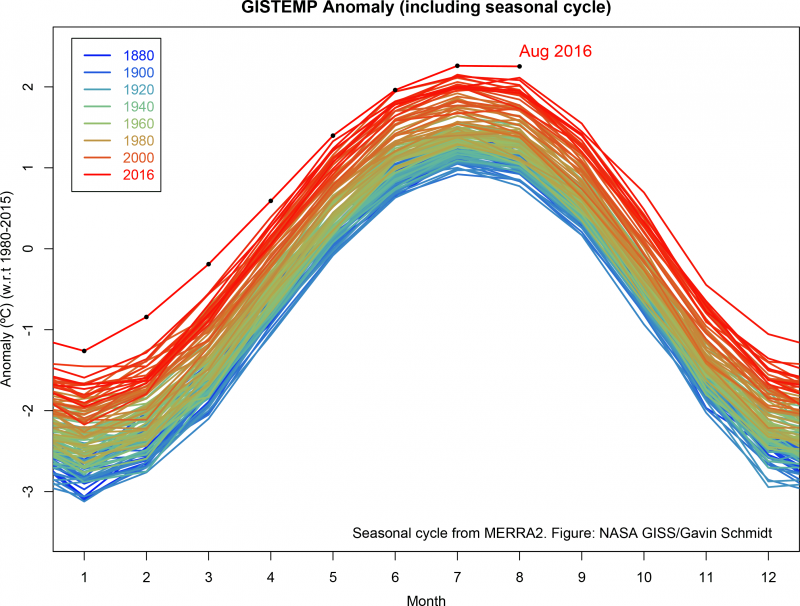
August 2016 was the planet’s warmest August since record-keeping began in 1880. That’s according to an analysis of global temperatures released Monday (September 12, 2016) by scientists at NASA’s Goddard Institute for Space Studies (GISS) in New York.
Although the seasonal temperature cycle typically peaks in July, August 2016 wound up tying July 2016 for the warmest month on record. This year is likely to be the hottest year on record, as August continued a streak of 11 consecutive months that have set new monthly high-temperature records.
The GISS monthly analysis is assembled from data from about 6,300 meteorological stations around the world, as well as ship- and buoy-based instruments measuring sea surface temperature, and Antarctic research stations. The modern global temperature record begins around 1880 because previous observations didn’t cover enough of the planet.

August 2016’s temperature was 0.29 degrees F. (0.16 degrees C) warmer than the previous warmest August in 2014. GISS Director Gavin Schmidt said in a statement:
Monthly rankings, which vary by only a few hundredths of a degree, are inherently fragile. We stress that the long-term trends are the most important for understanding the ongoing changes that are affecting our planet.
Enjoying EarthSky? Sign up for our free daily newsletter today!
Bottom line: According to a NASA analysis, August 2016 tied July 2016 as the hottest month on record.











